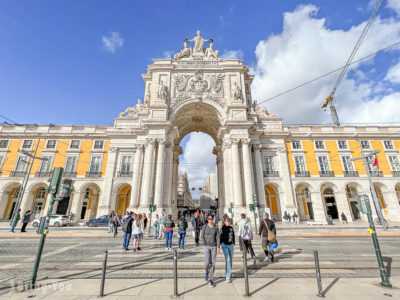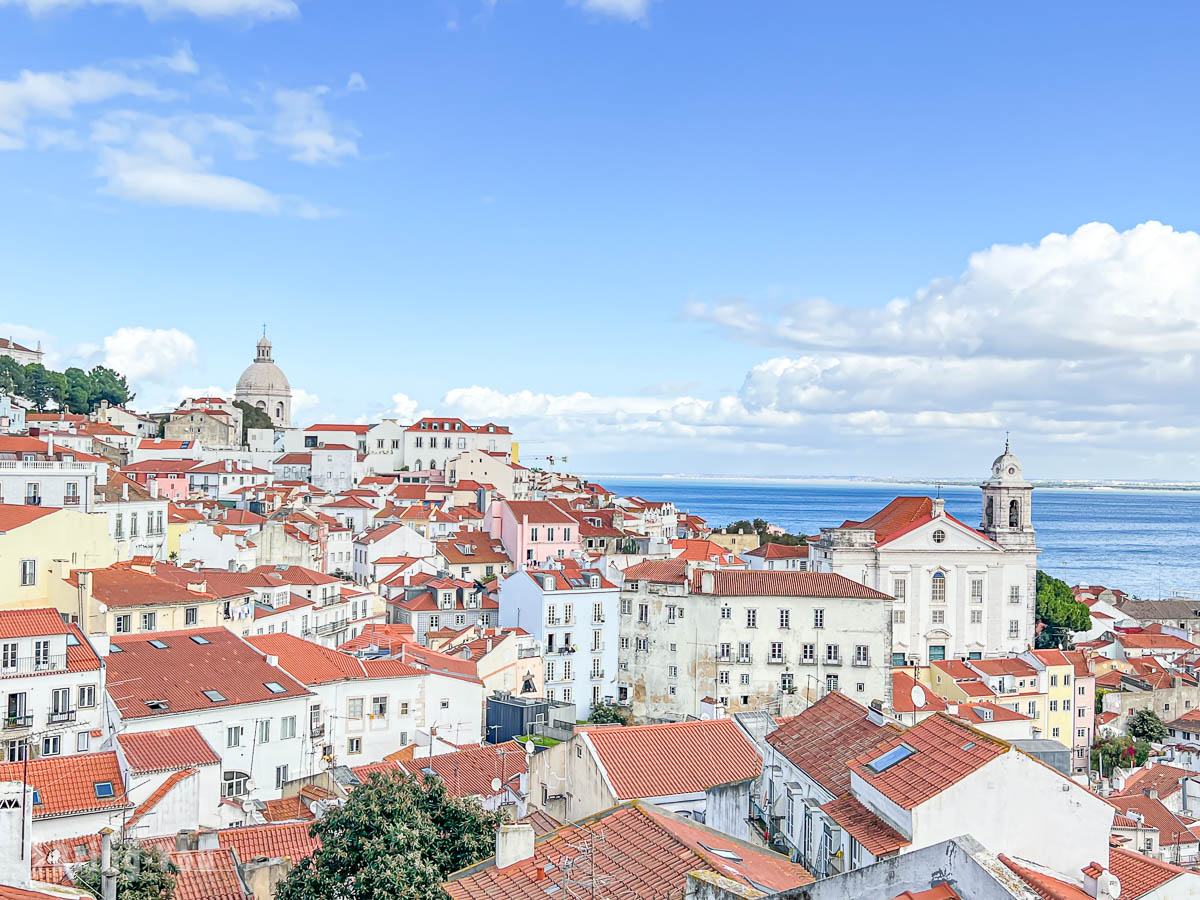
Lisbon was once an underrated city to visit in Europe. However, its rise in influence is starting to have globetrotters questioning: “What’s so special about Lisbon and how many days are enough to make the most of it?”
Well, you’ll soon find out in this handy guide.
Lisbon embraces a somewhat lower-key feeling compared to other heavyweights such as Paris, Milan, or Rome.
The colorful houses take over narrow alleyways while the sprawling plazas (city squares) are flooded with monuments and full of go.
After the deadliest earthquake swept through the capital in 1755, followed by fires that swallowed almost the entire city on All Saints Day, Lisbon came alive even stronger.
Today, each neighborhood of Lisbon is a vital puzzle that contributes to the great landscape. Each beholds a unique charm that you’re gonna find out in below.
Attraction In Baixa Neighborhood, Lisbon
Baixa is Lisbon’s most central part filled with life and lots of happenings. It’s also the busiest part of the city where hotels, stores, restaurants, and bars conquer nightlife.
Rossio Square
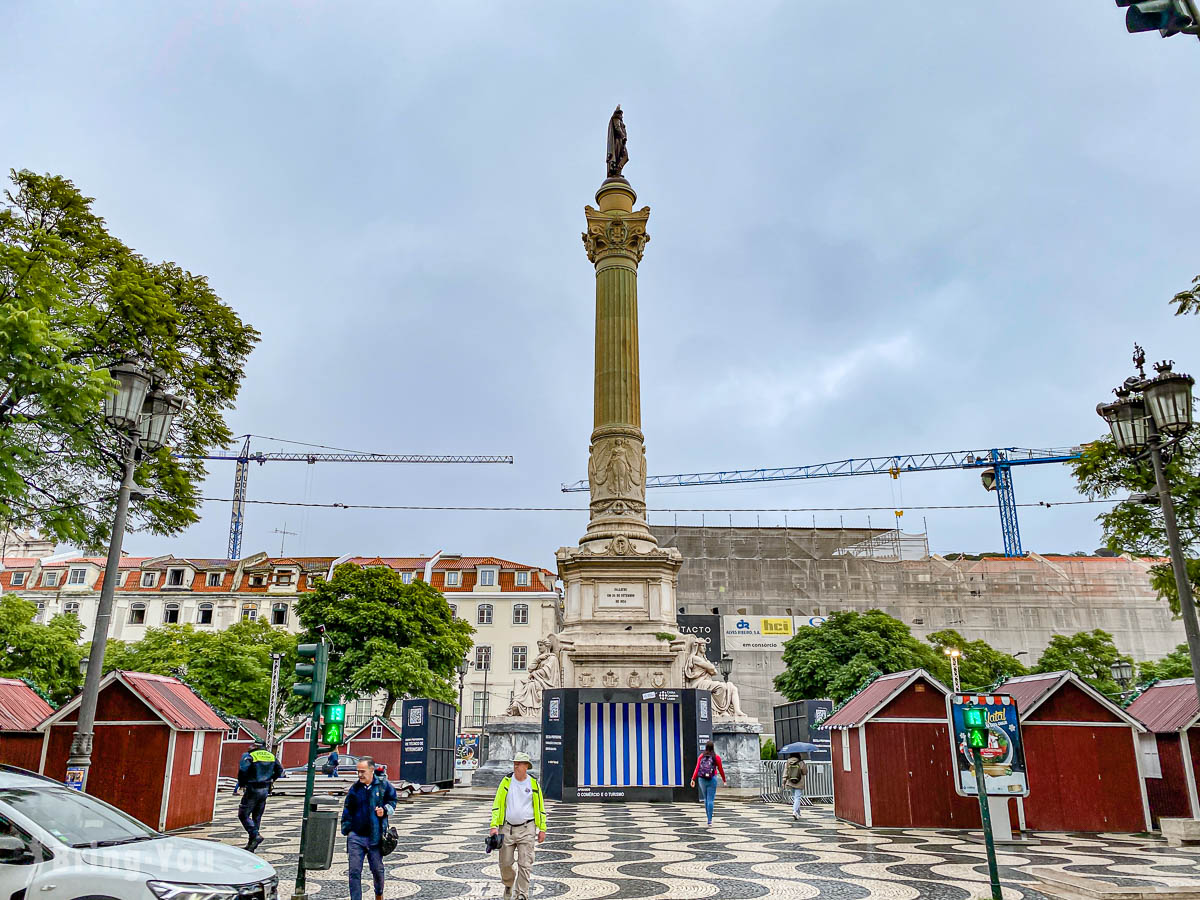
Rossio Square was once a stage for all sorts of events – from popular uprisings and lively celebrations to the daring drama of bullfights and even solemn executions. It’s like a time capsule of Portugal’s rich past.
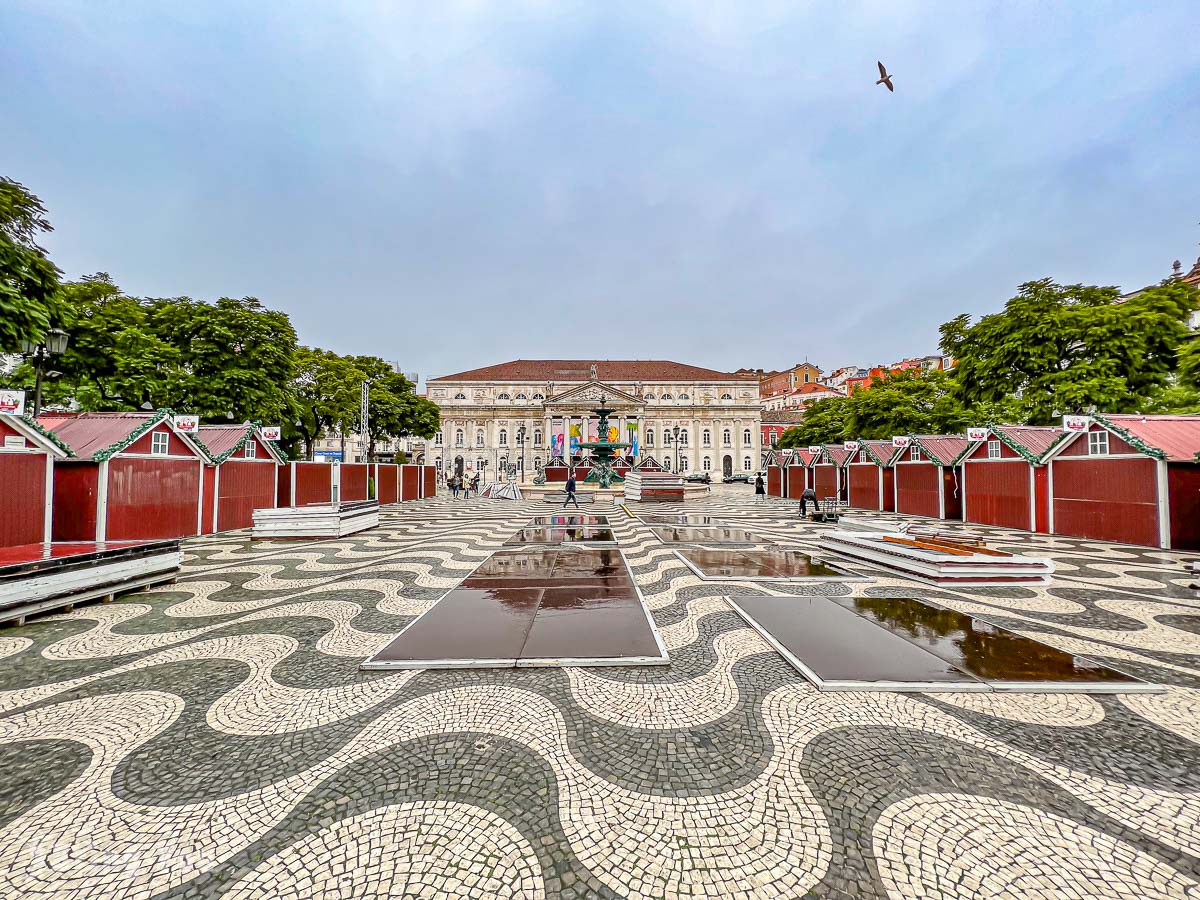
Today, you’ll be greeted by a charming sea of cobblestones, surrounded by elegant fountains and statues that whisper stories of days gone by.
Rossio Metro Station teams up with a web of street tram stops converging. It’s the transportation heart of Lisbon, making it super easy to explore the city from this central spot.
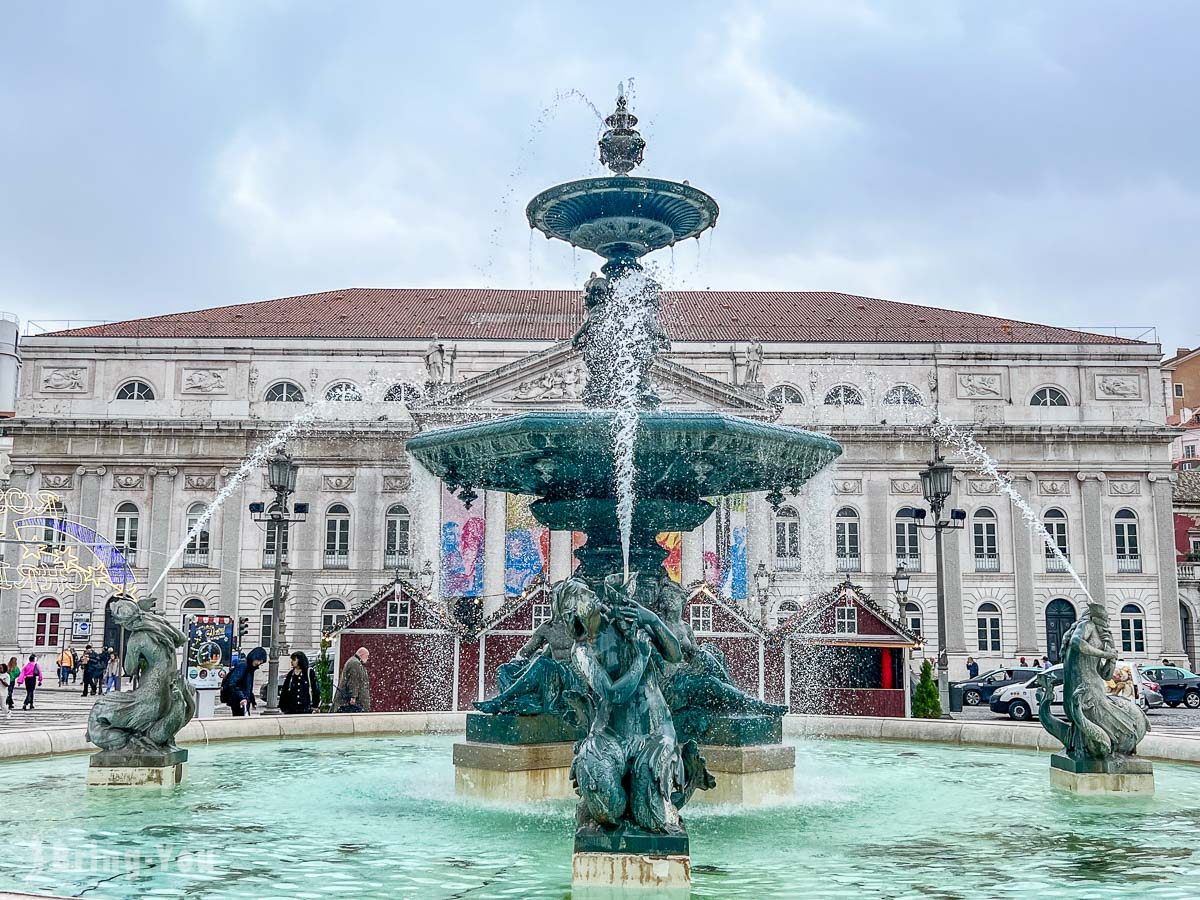
Restaurants serving up delectable Portuguese dishes are all around. You can savor the flavors of Portugal just by strolling around.
Praça da Figueira
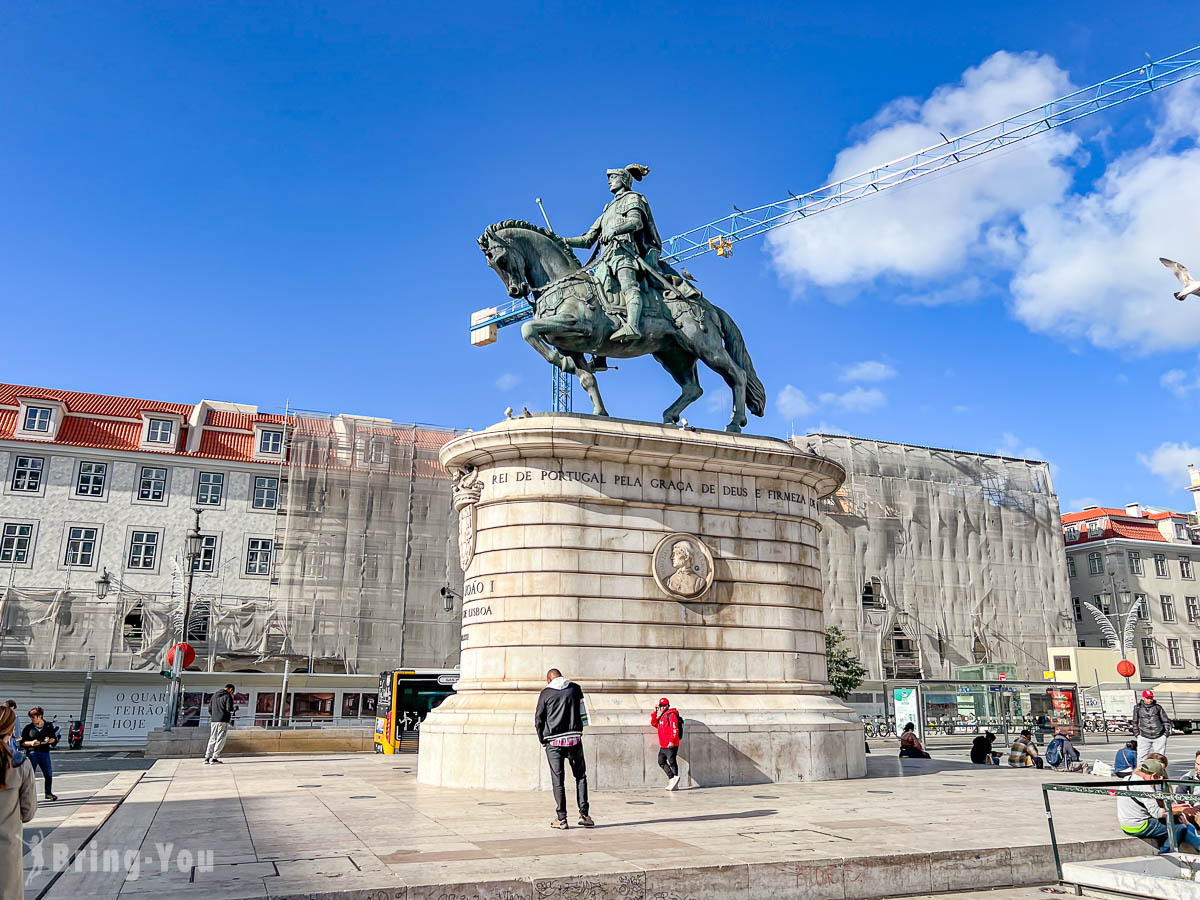
Figueira Square is a large square in the center of Lisbon, taking over the entrance of Rossio Station. This ancient square has been around since the 16th century after the Royal All Saints Hospital was knocked down to ruins during the great earthquake. Later on, vendors quickly filled up the square by setting up an outdoor market which has now transformed into an open space as it is today.
The core of Praça da Figueira stands the equestrian bronze statue of the former Portuguese King John I looking over the townhouse buildings. Souvenir shops and restaurants occupy these floors with a stellar selection of affordable accommodations to spend your nights.
Elevador de Santa Justa (Santa Justa Lift)
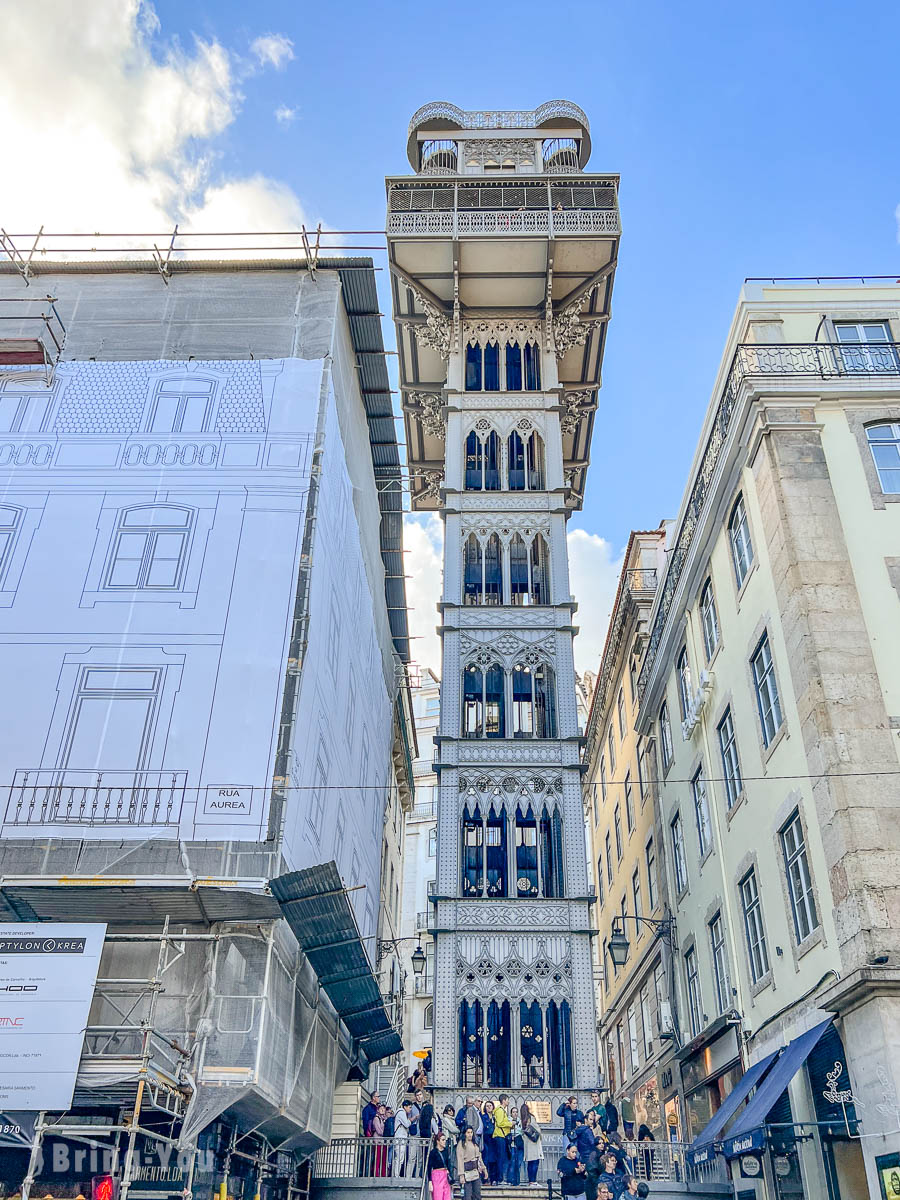
After a three-minute walk south of Rossio Metro Station, Santa Justa is a heritage lift that’s sandwiched between the towering residential buildings behind the streets of R. do Ouro.
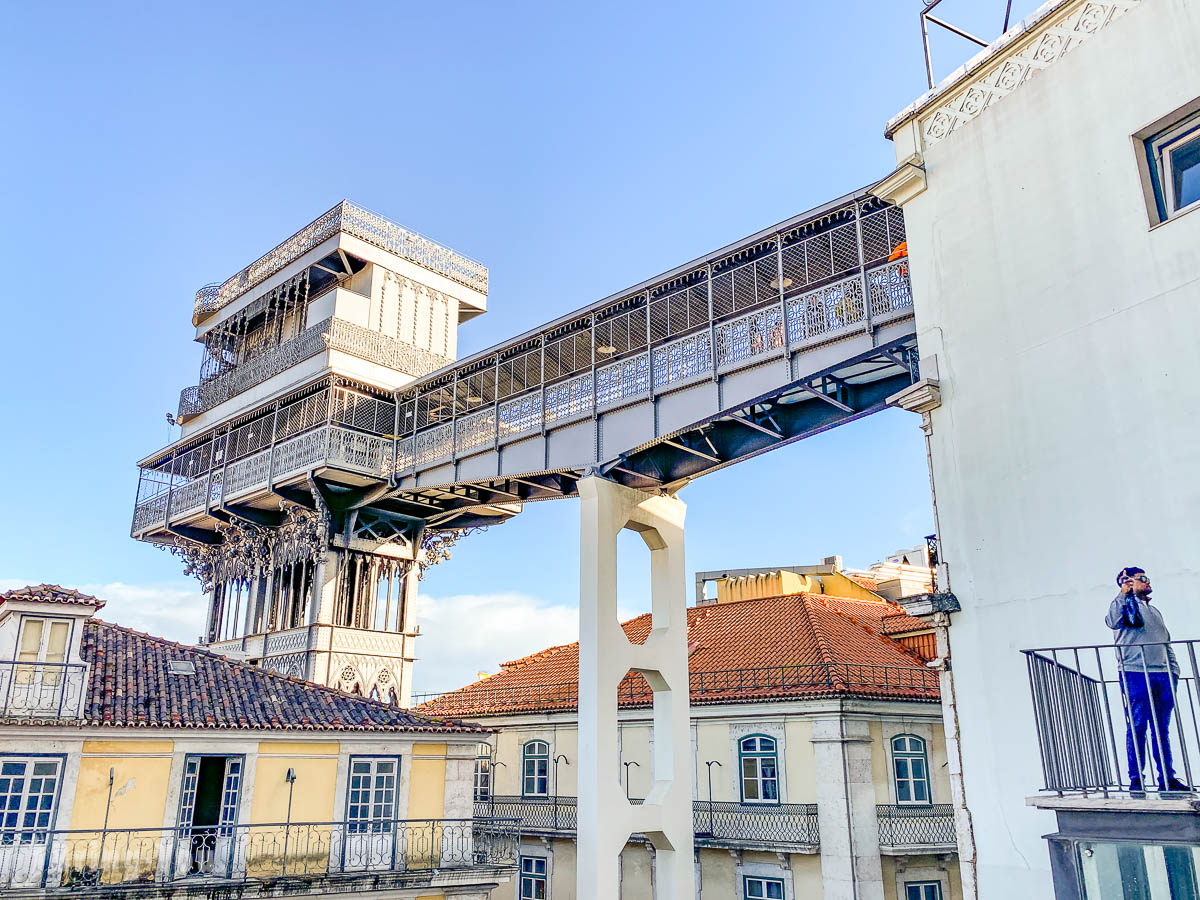
Santa Justa Lift boasts a whopping height of 45 meters with two lift cages. The interior is supported by a system of wooden beams and columns in the typical neo-Gothic style.
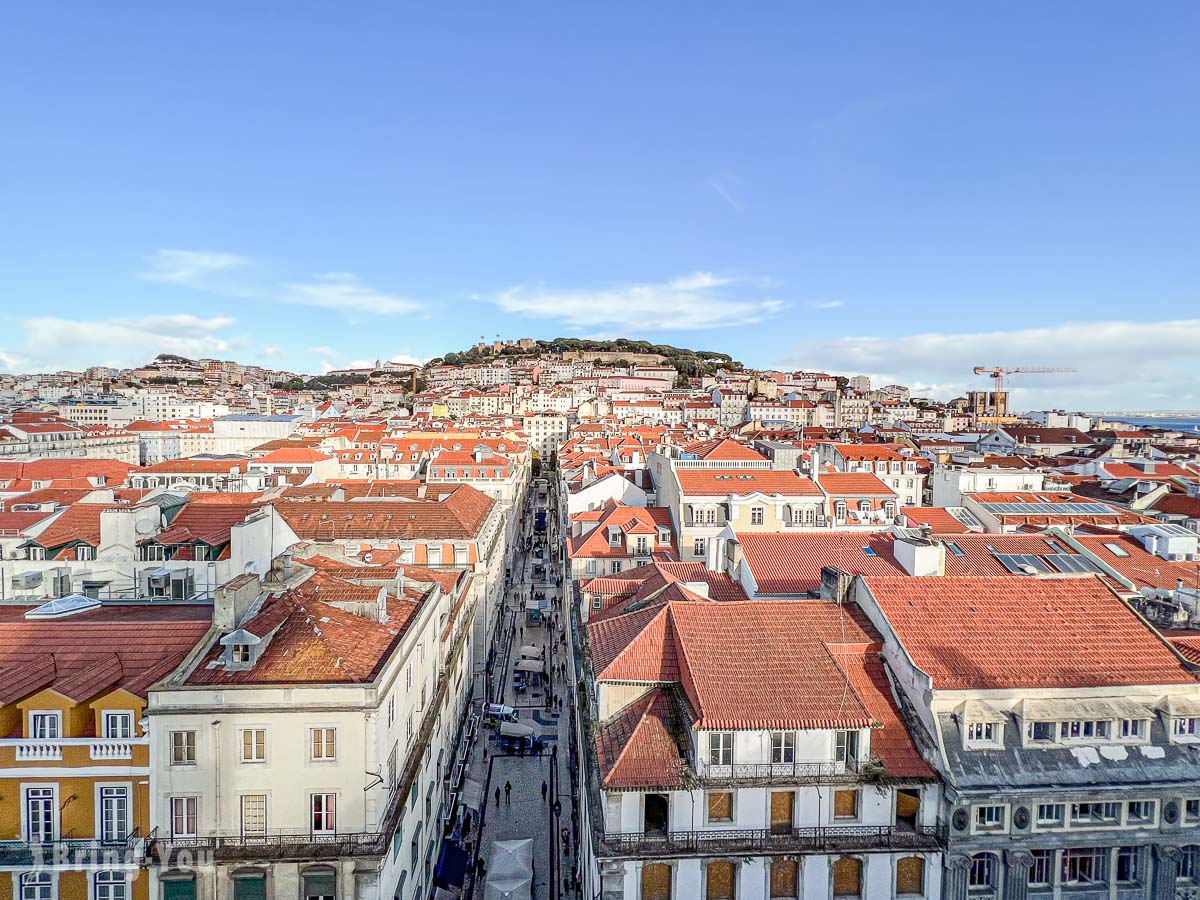
Today, Santa Just Lift is still in function with an entrance ticket for a ride to the top. To ditch the crowd, seek out the stairs and you should be at your desired level within ten minutes.
Convent of Our Lady of Mount Carmel (Arqueológico do Carmo)
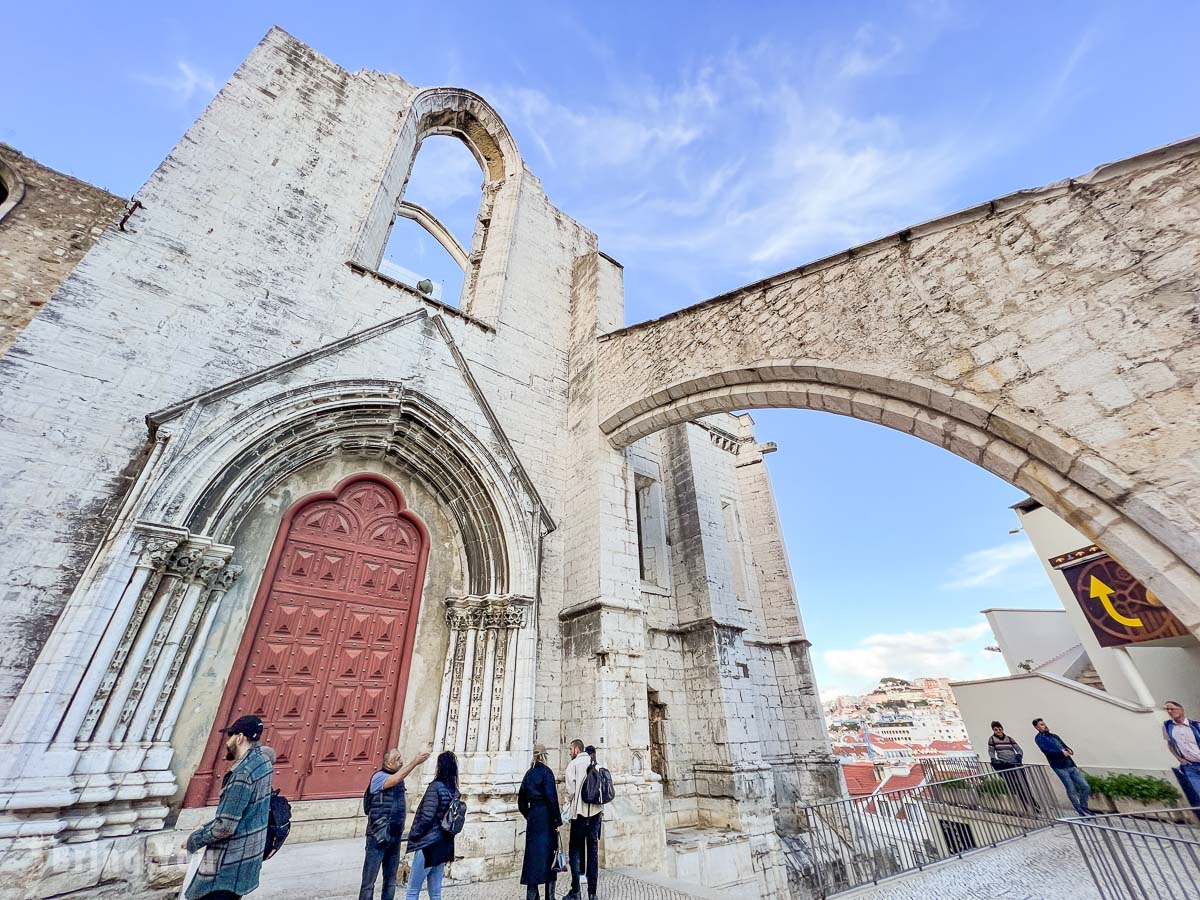
In the year 1550, the Church and Convent of Our Lady of Mount Carmel were established, wrapping the Catherine of Habsburg, Queen of Portugal on the inside. This is one of the most visited attractions in Lisbon just a short walk from the aerial bridge above the Santa Justa Lift.
Fast forward to 200 years later, the gigantic building was poorly destroyed by the earthquake that took away a large section of the original structure. Today, the Church and Convent of Our Lady of Mount Carmel is transformed into the Carmo Archaeological Museum, preserving the initial Gothic exterior on the outside with plenty of sarcophagi and mummies on the inside.
Livraria Bertrand Bookstore
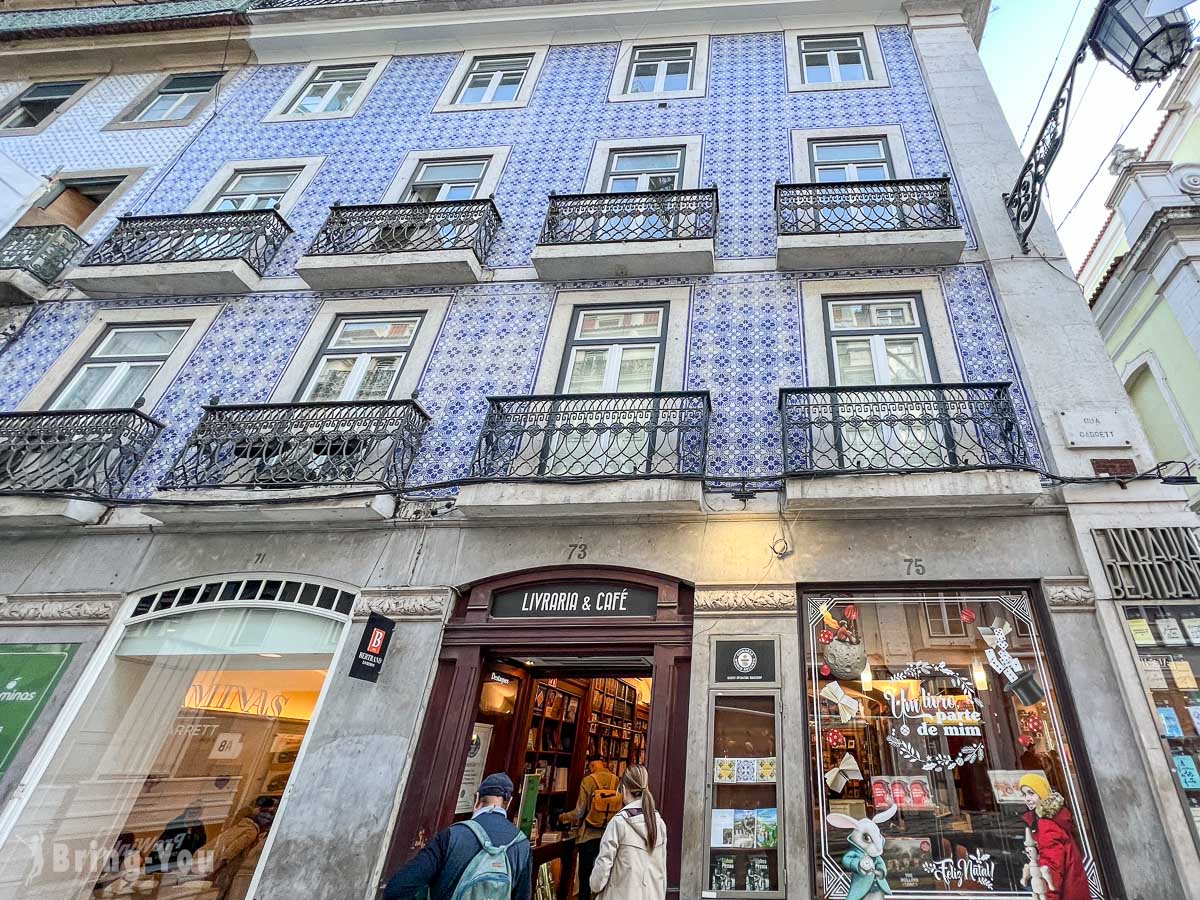
This 1732-established bookstore is proudly named the oldest in the world. This new location is the final decision after years of being closed, renovated, and moved.
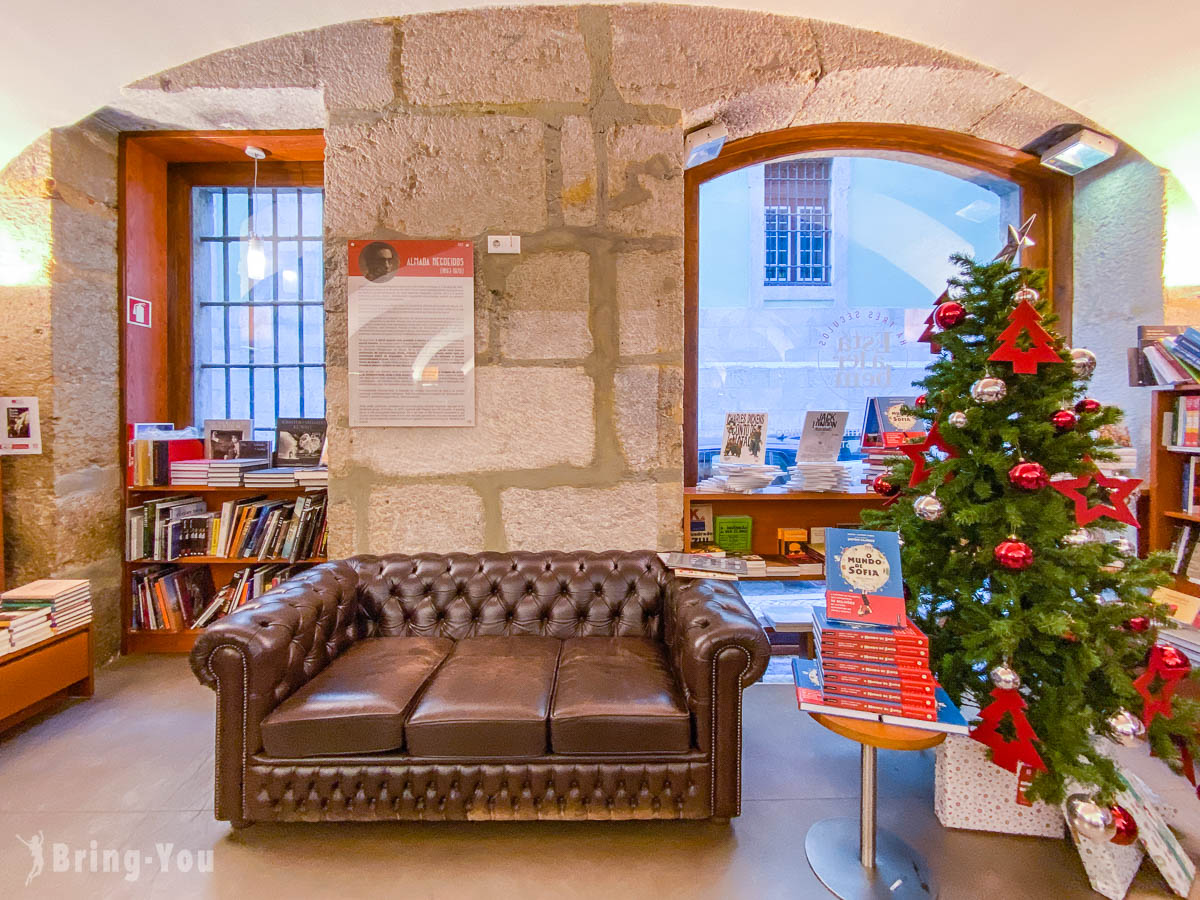
For the past three centuries, Livraria Bertrand has seen sweat and tears from the people of Lisbon after the tragic events of the earthquake in 1755 and the civil war in the 19th century.
The heritage building is a piece of art itself with azulejo tiles covering the facade. Linger to the back of the bookstore and you shall find a small cafe to enjoy your newly bought book while sipping on a hot cup of Joe.
Praça do Comércio
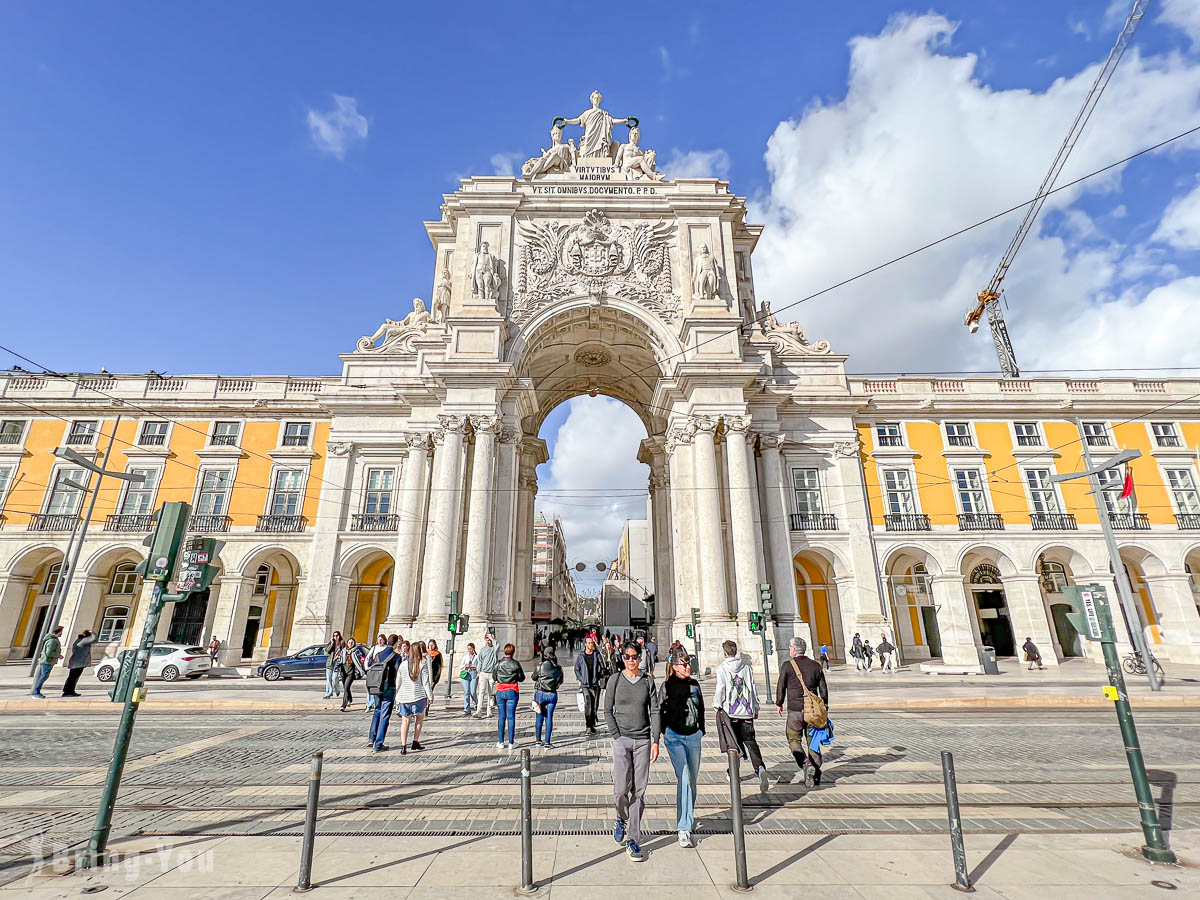
Hugging the harbor of Tagus Estuary, Praça do Comércio is one of the largest squares in Lisbon, peppered with a range of old-standing architecture and stunning views of the waterfront.
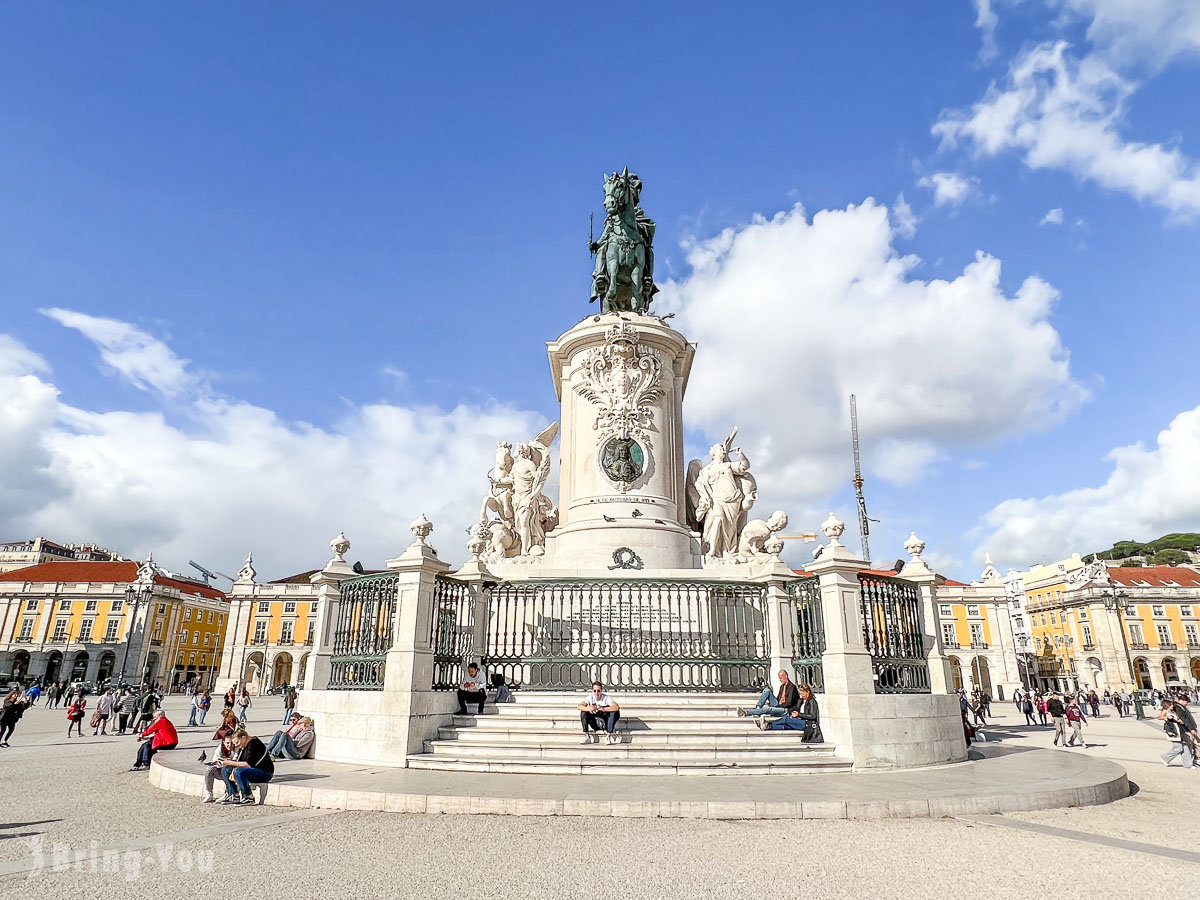
Sitting smack dab in the core of the square, the statue of King José I of Portugal and the Algarve still stood the test of time after the great earthquake.
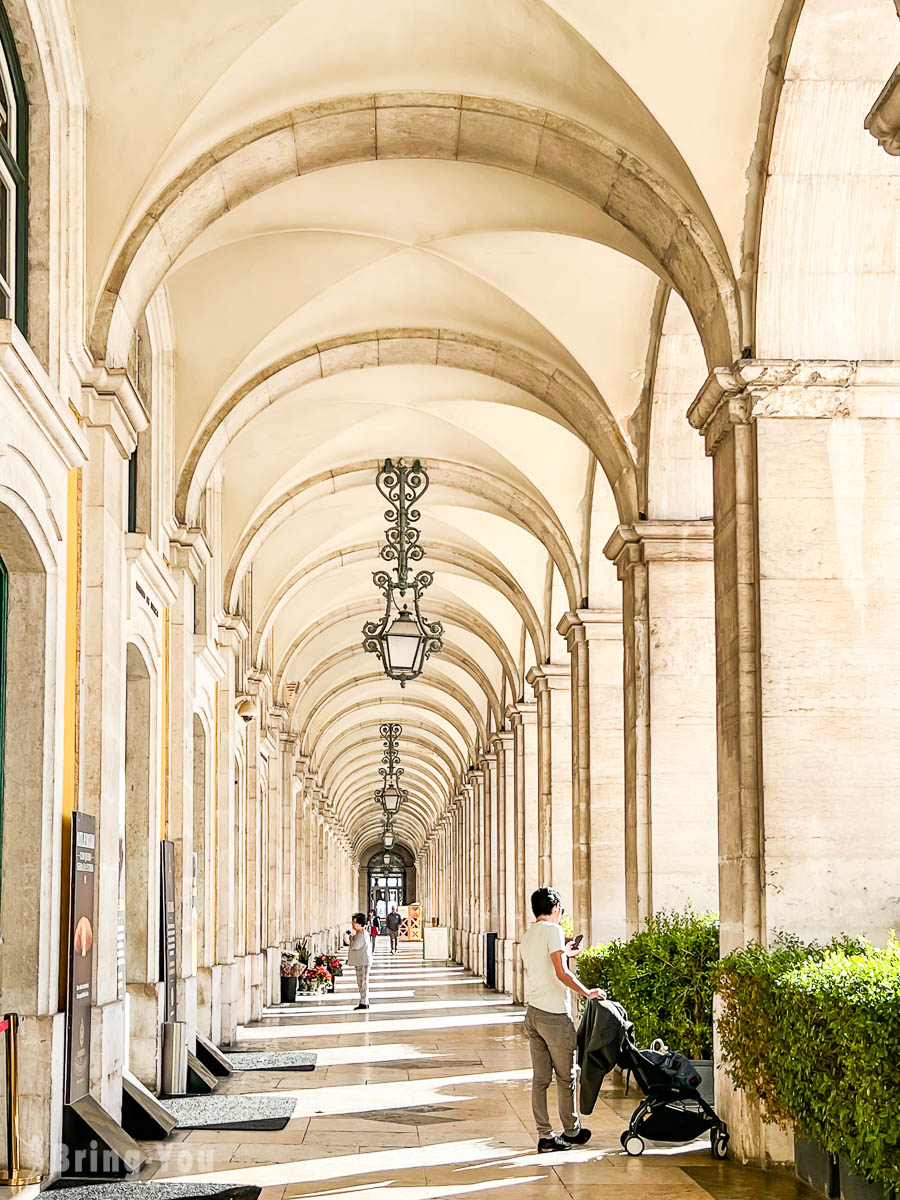
When the air is crisp, families and friends flock here and spill into their favorite restaurants and shops. Sitting by the terrace at one of the dining holes here to watch the world go by and kids playing football is the best way to rest your legs before the sun is out.
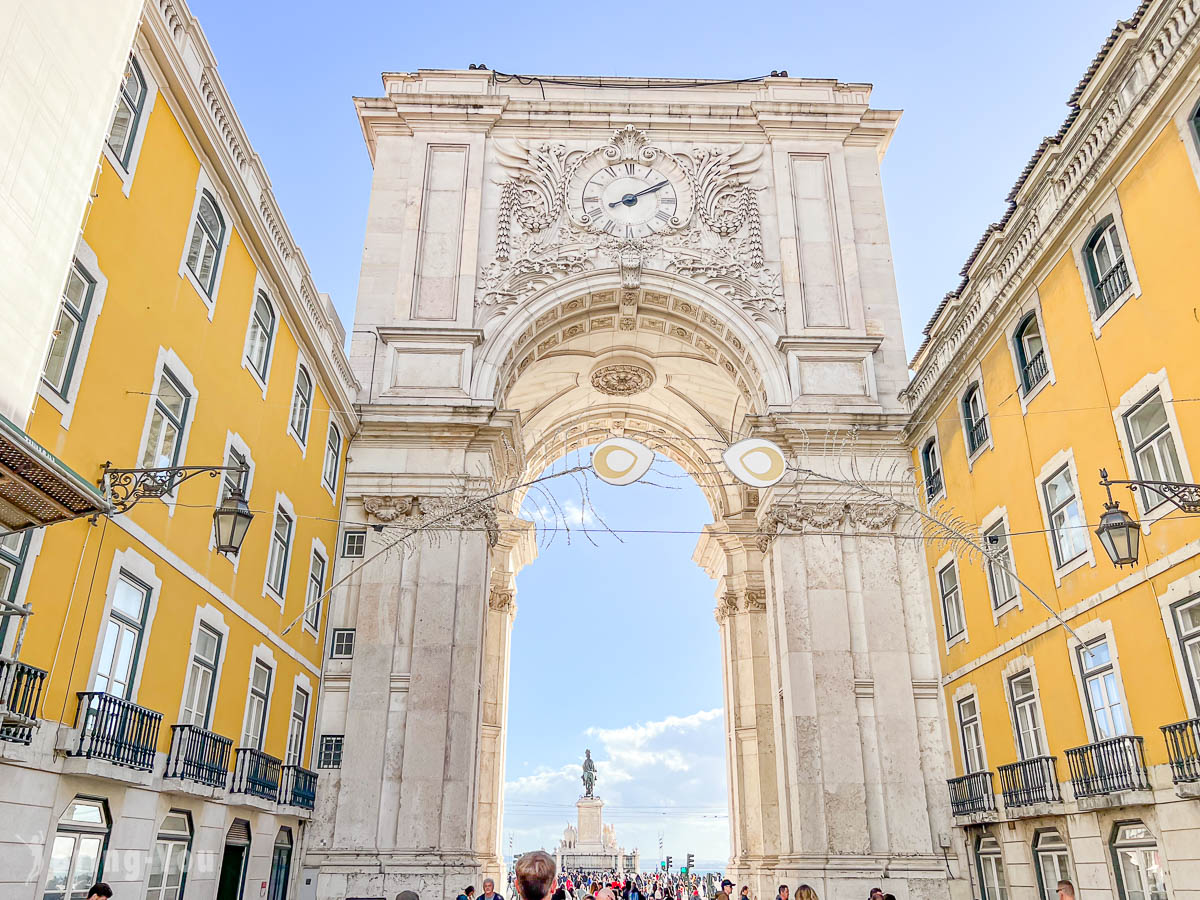
Time Out Market
Going forward as a nerve center of all foodies and culture vultures alike, Time Out Market is that one special place where you don’t have to fight over what to eat.
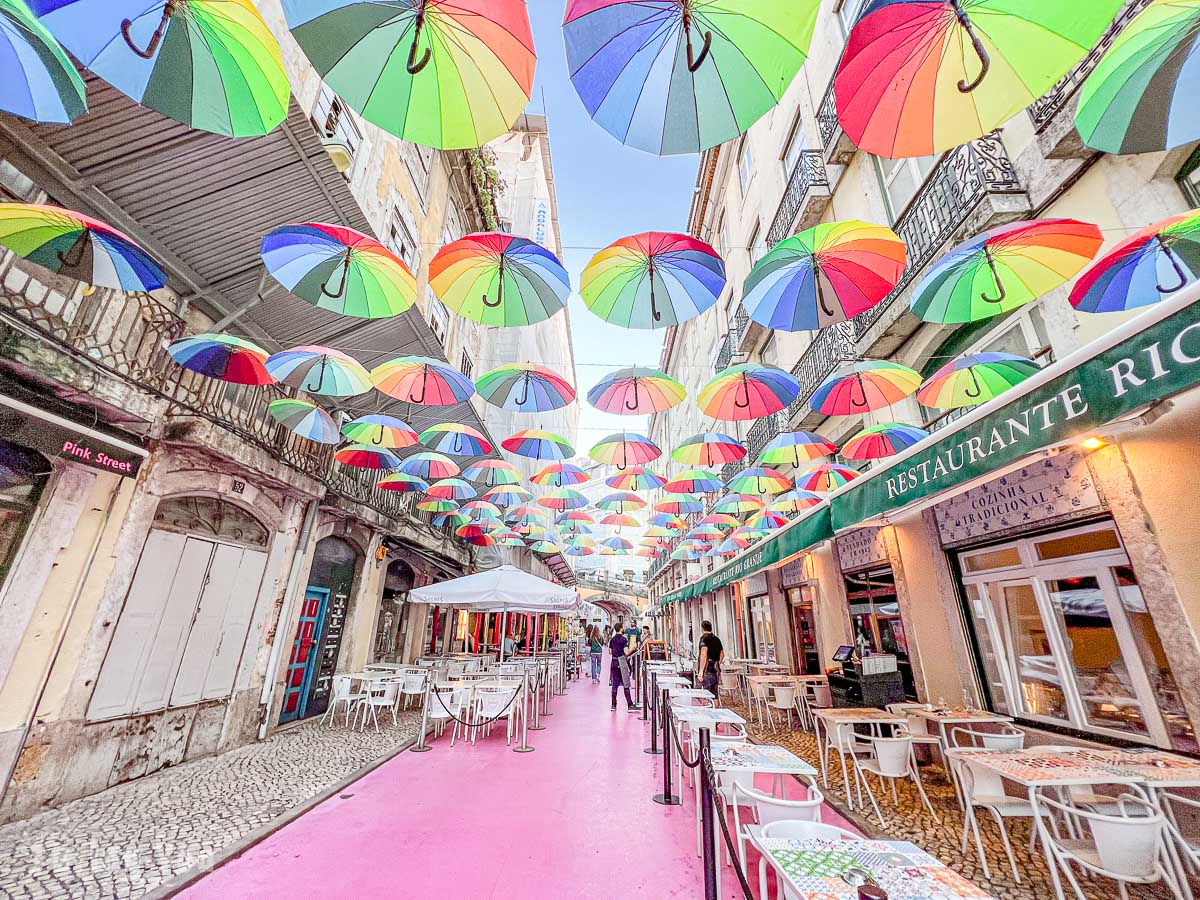
With a stone’s throw from the Instagrammable Pink Street, Time Out houses some of the most respectable home cooks, chefs, and long-standing family eateries serving everything from seafood and egg tarts to steaks and bars.
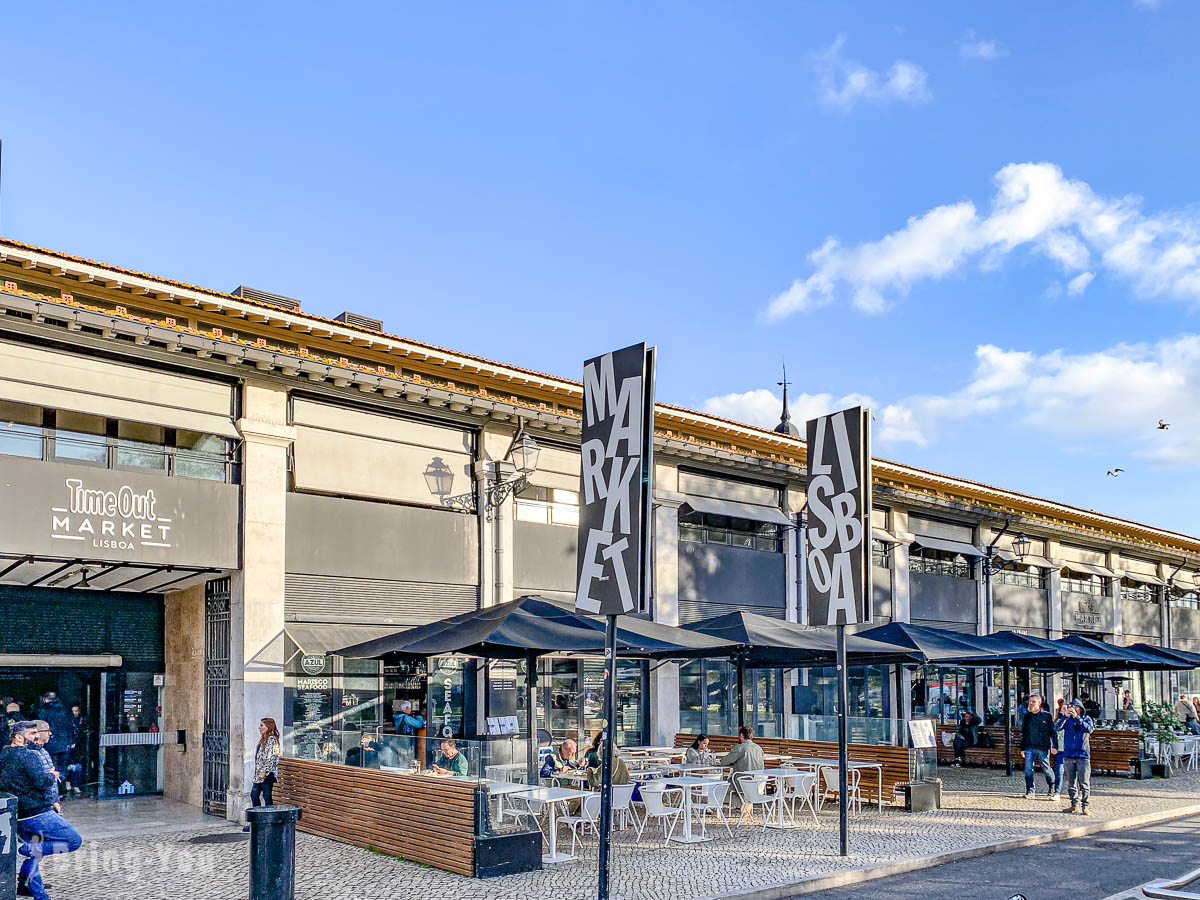
Going beyond the food scene, Time Out is infused with a bustling selection of souvenir shops and bars. Once Lisbon’s largest traditional wholesale market namely Mercado da Ribeira, the trading hub was acquired by Time Out, a London-based digital magazine in 2014 and transformed into today’s food court.
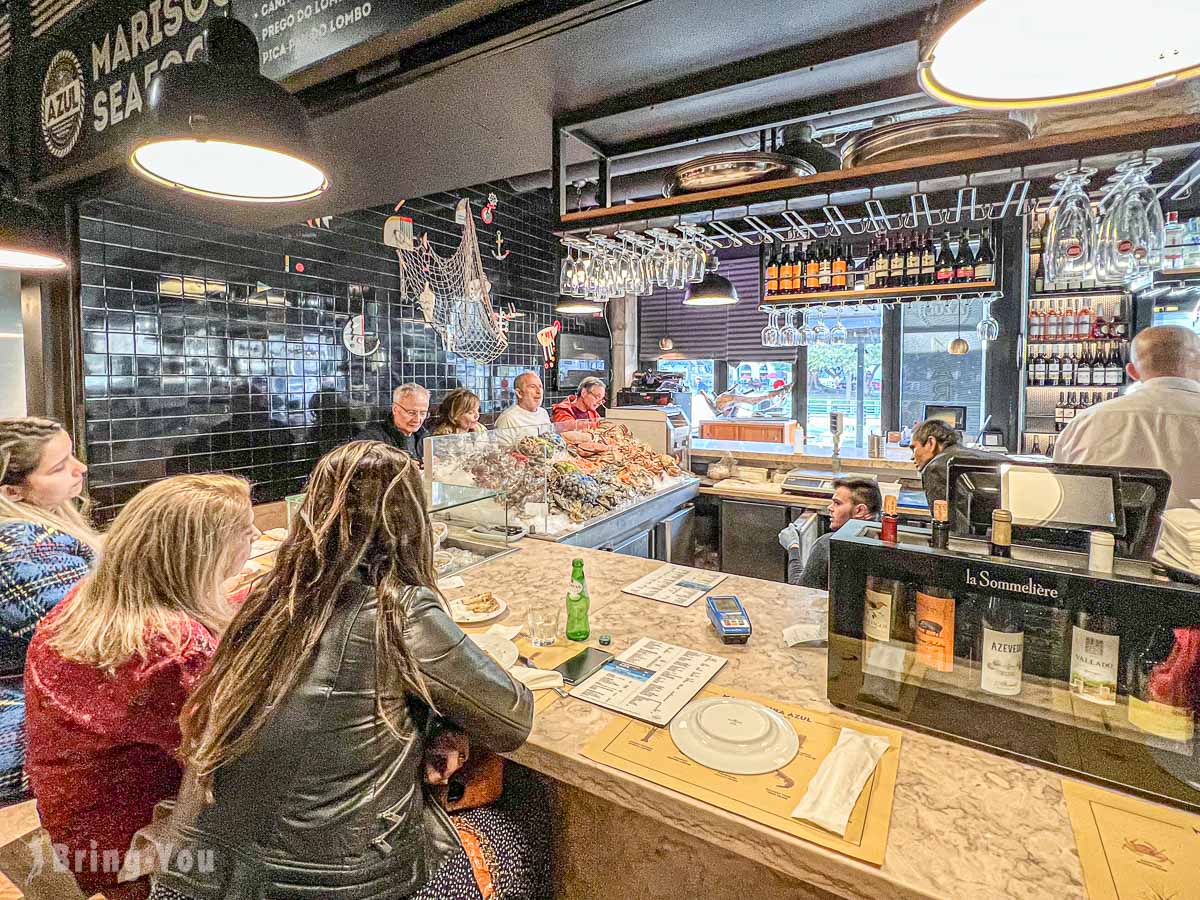
Attraction In Alfama Neighbourhood, Lisbon
Skirting Baixa to the east, Alfama has a higher altitude where scenic vistas become a benchmark. Observation decks are plenty here and you’ve gotta rely on foot and trams (No. 28, for instance) to traverse the undulating and steep terrain.
Portas Do Sol Viewpoint
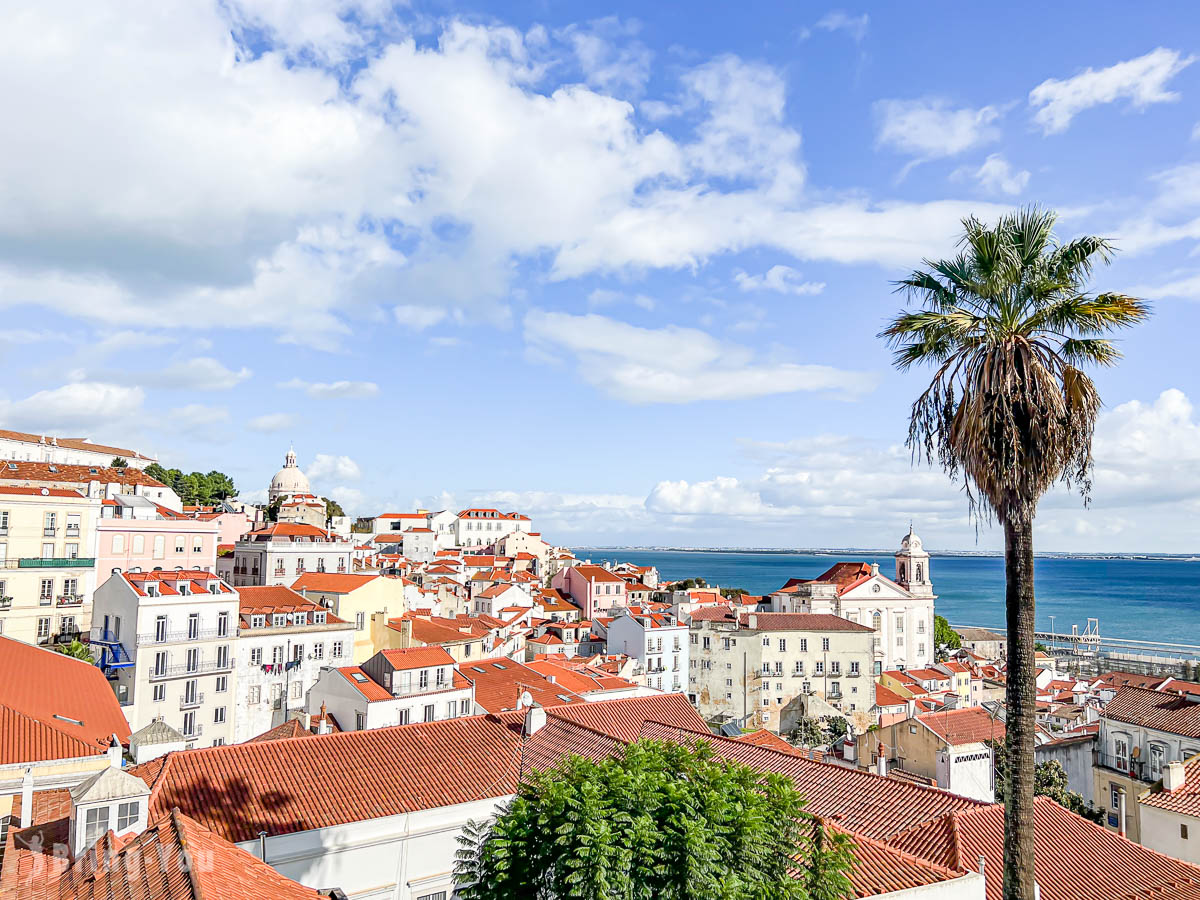
A short hike uphill to the São Jorge Castle from the Cathedral, Portas Do Sol Viewpoint is a real treat for the eyes after you make your way to this summit terrace. The outpost welcomes photographers worldwide with its enchanting sweeping wraparound vista of Alfama’s eastern coastline and the far-flung Tejo River.
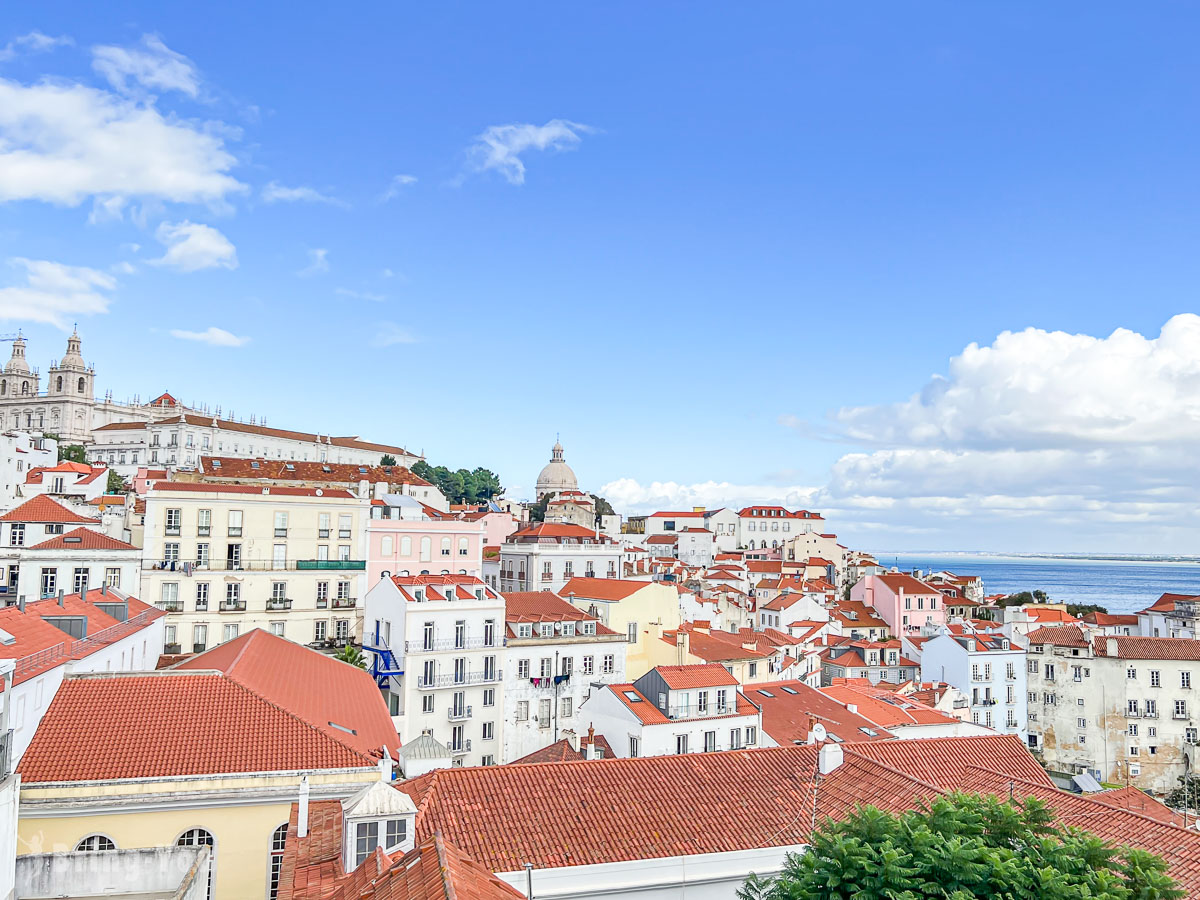
The foot of the hill is blanketed with a medley of streets, stairways, alleys, and a handful of towering domes of Santo Estêvão, São Miguel and São Vicente de Fora churches.
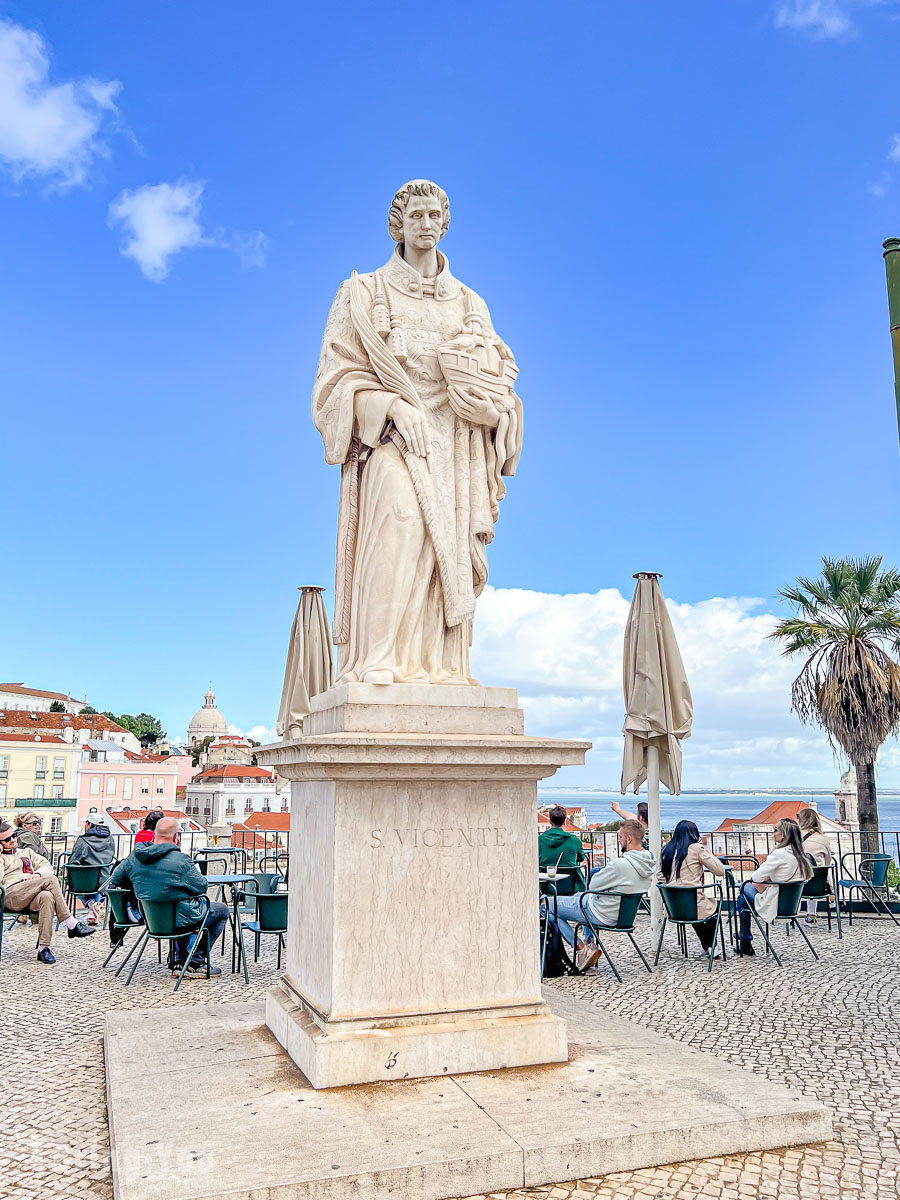
Attractions In Belem Neighborhood, Lisbon
Belém, occupying the southwestern edge of Lisbon, is home to some of the most gorgeous sunset scenes in the capital city. Though offering fewer attractions, Belém makes a statement with its flawless collection of monuments and viewpoints dating back to Portugal’s Age of Discovery.
Mosteiro dos Jerónimos (Jerónimos Monastery)
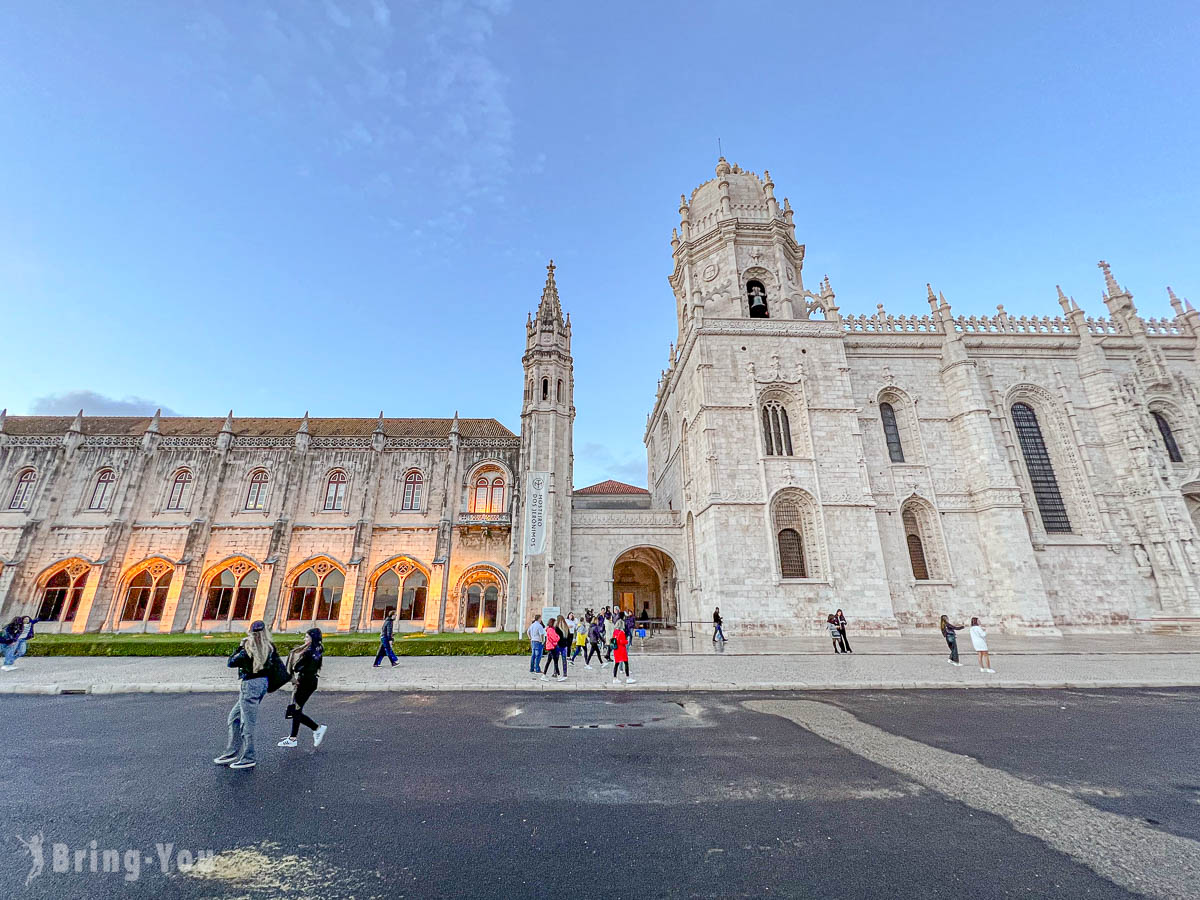
A long-standing monastery steeped in a marvelous Gothic Manueline style, Jerónimos Monastery houses an epic collection of maritime items and archaeology artifacts in its wings.
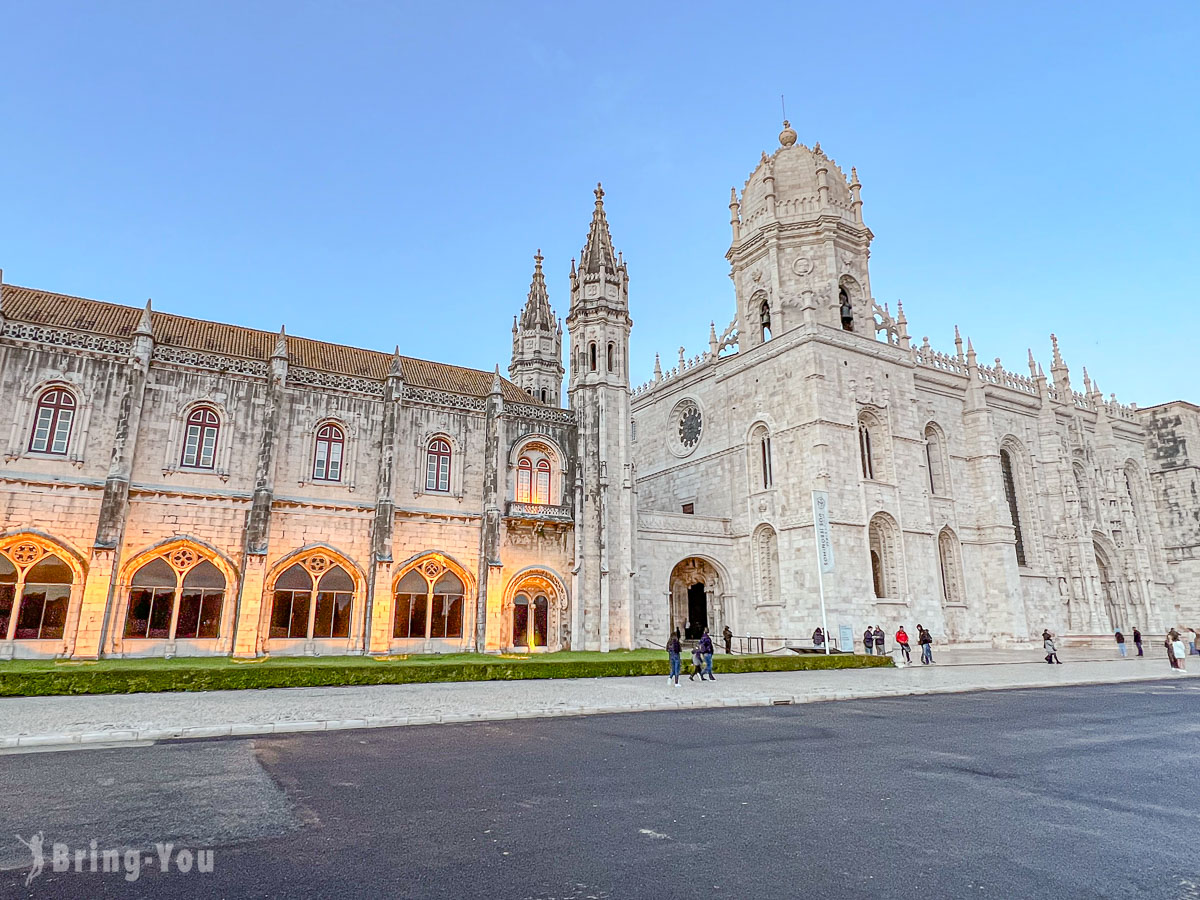
Halt your walk and cherish every minute to gaze into each intricate inch that’s perfectly carved and sculpted in extraordinary details – the residents of Lisbon are proud of their consummate craftsmanship.
Don’t miss out on the cloisters, which serve as a tranquil oasis to cleanse your mind amidst the crowds in this bustling part of the Tagus River.
Pastéis de Belém
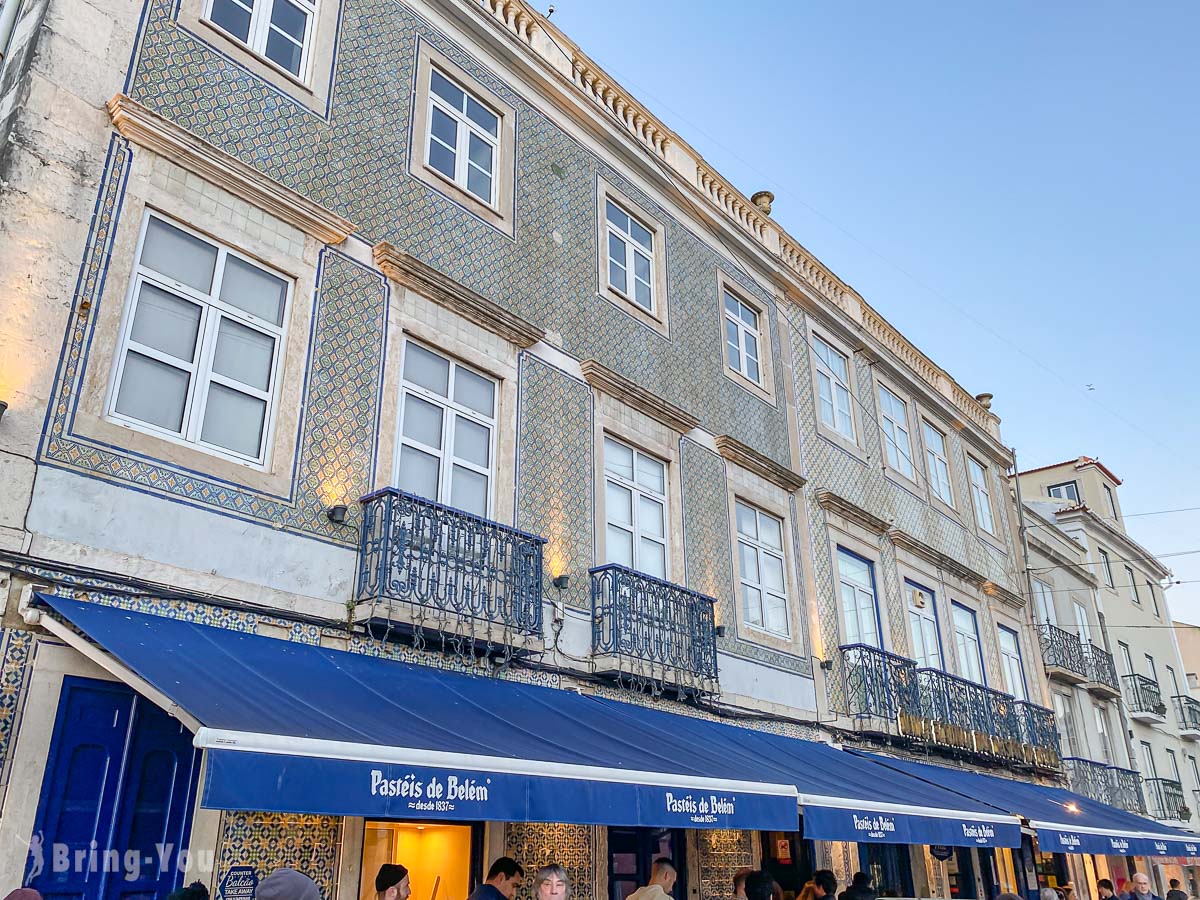
Pastéis de Belém is a wonderful retreat for the palate after a long day beating the busy streets of Lisbon. Right here, Portuguese baked goods including tarts and breads are dished up with dignity, calling custard lovers to fill this large, airy bakery every morning.
On any given sunny day when breakfast time ticks the clocks, the crowds soon flush in and take over the entrance.
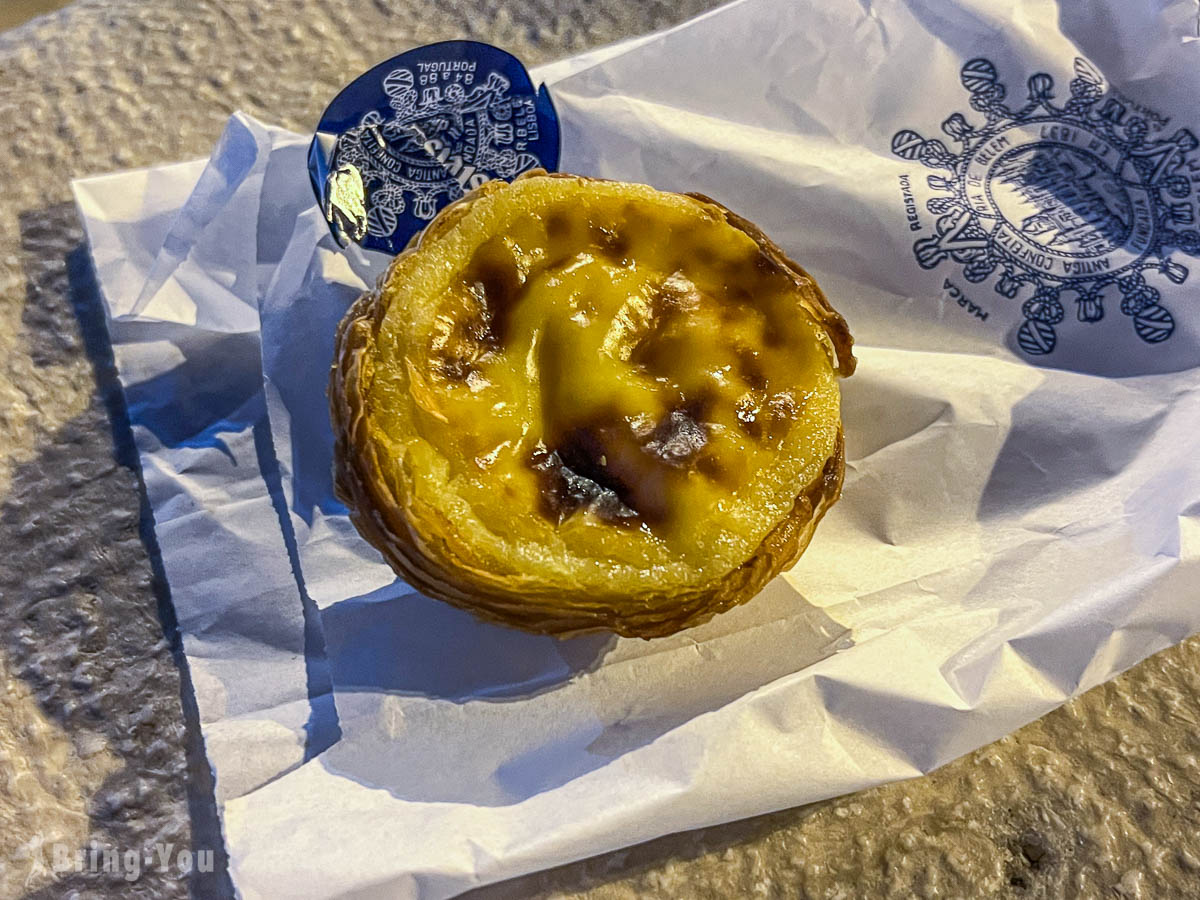
Pastéis de Belém is famous for its secret recipes of Portuguese egg tart, a staple invented by the nuns of the Jeronimos Monastery.
Back in the day, egg whites had a double duty – sizing clothes and filtering wine. This left folks with plenty of egg yolks on their hands. The nuns came in and decided to turn those yolks into something delicious. From then on, egg tart has become a norm. It boasts a flaky, crispy puff pastry shell with layers that are pure perfection.
Padrão dos Descobrimentos (Monument to the Discoveries)
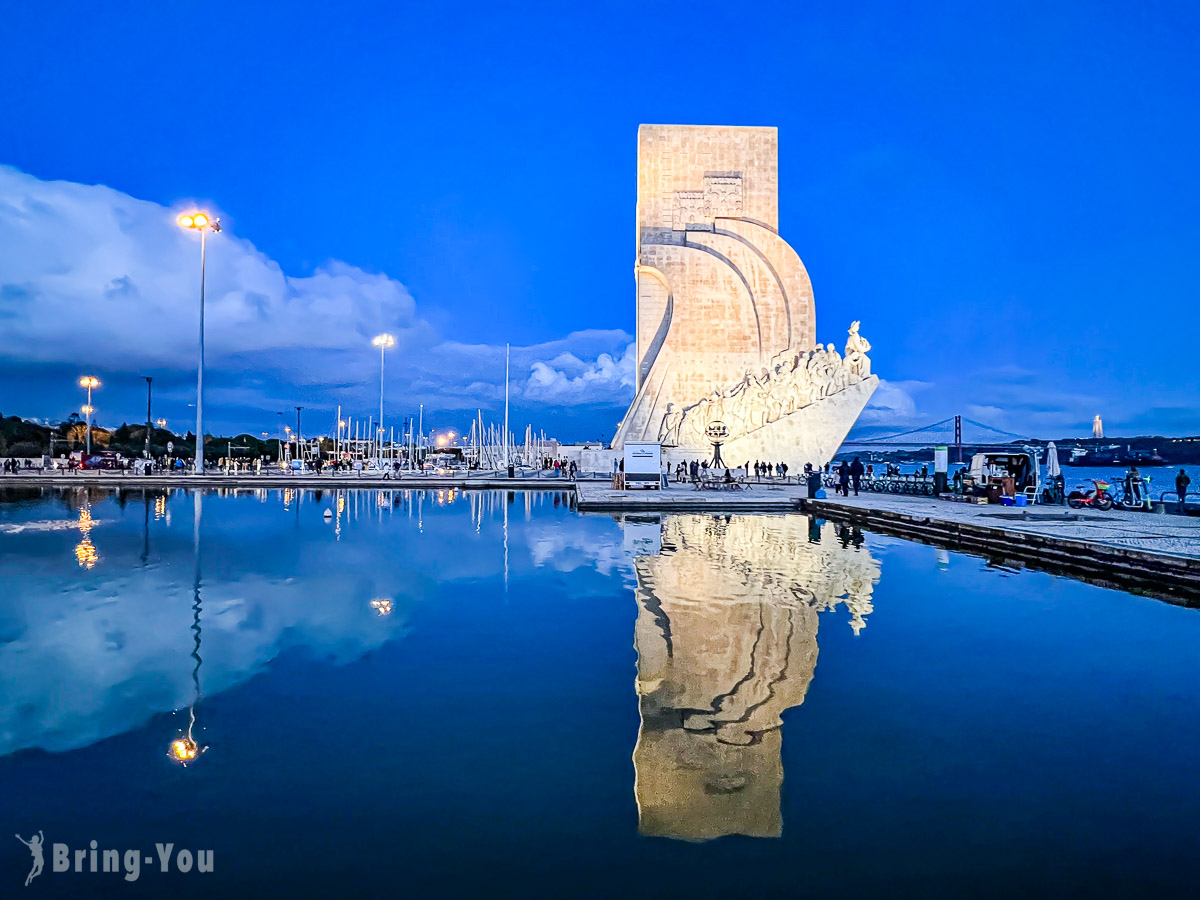
This is an exquisitely crafted sculpture representing the traditional Portuguese sailing ship with Prince Henry the Navigator leading the way. Occupying the rest of the ship is a group of other great discoverers at the time.

The quirky statue pierces through the sky, beckoning attention from visitors flocking to the Tejo River. The monument neighbors the Rose Compass to the north, which displays the world map and major sea routes that were discovered by the Portuguese during the 15th and 16th centuries.
Torre de Belém (Belém Tower)
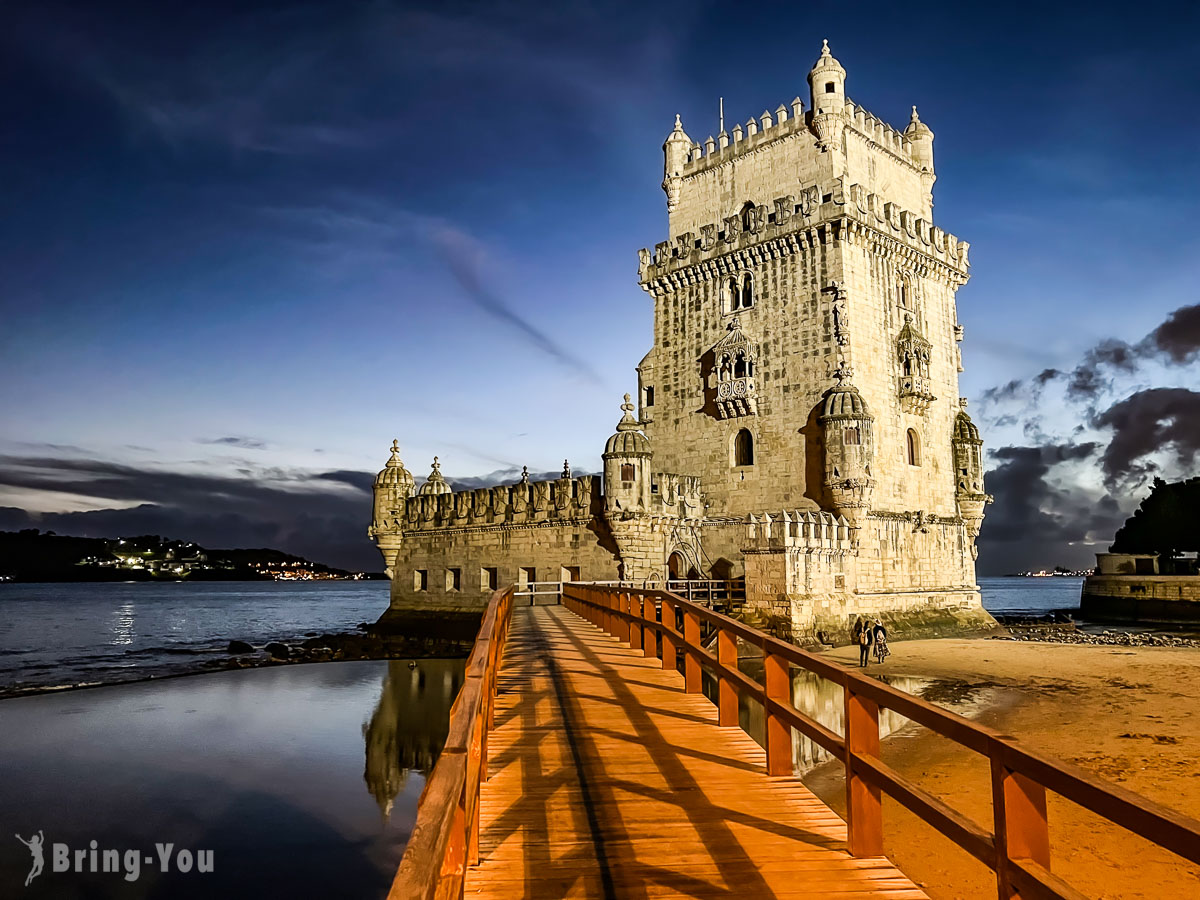
Jutting out from the port of Lisbon, the Tower of Belém is well perceived as one of the most recognizable icons of the city after it was listed in the World Heritage List in 1983.
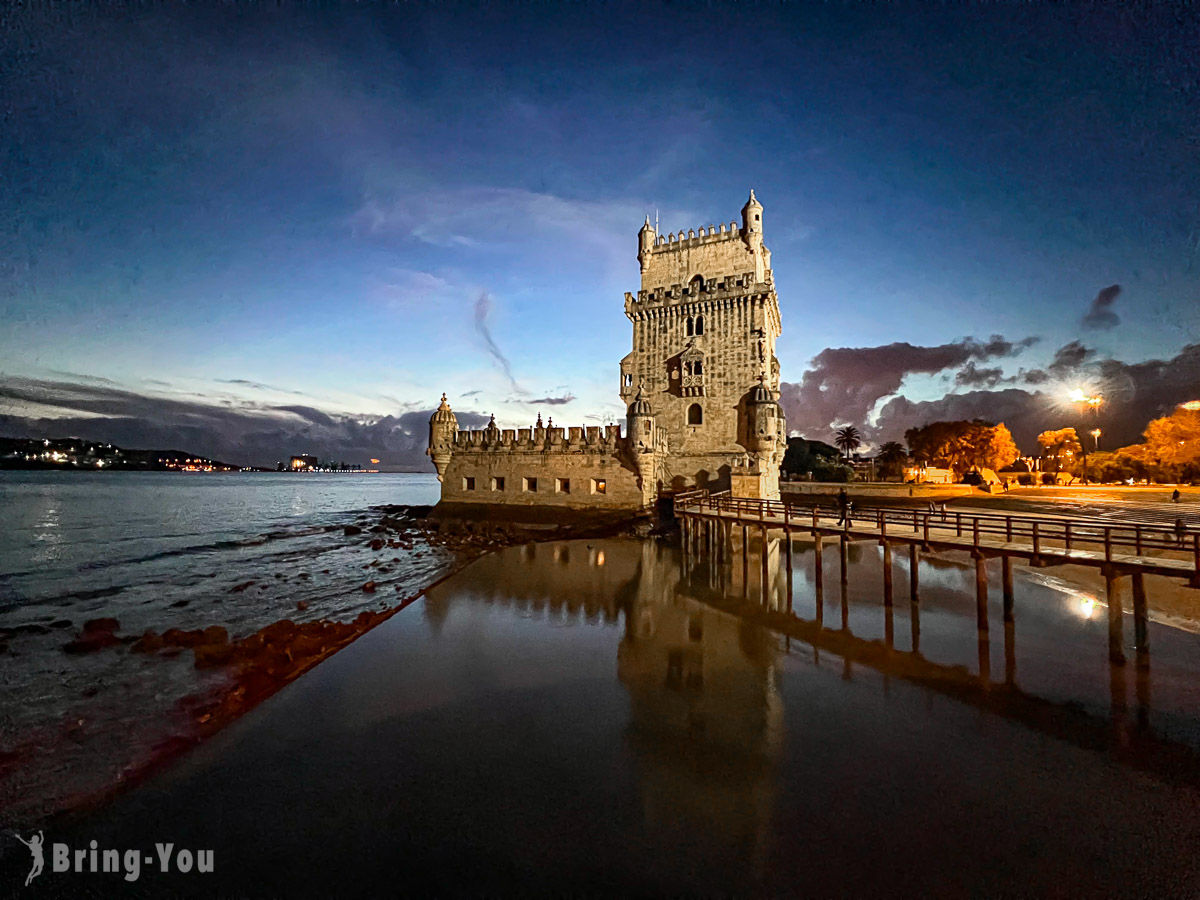
Taking root in the 16th century following the booming scene of the Age of Discovery, the Tower of Belém stood tall to announce the country’s intention as one of the leading pioneers on both land and sea.
Today, the Tower of Belém still stands the test of time as an introduction of Lisbon for those coming by sea. It also acts as a defense system against invasions and attacks from the Tagus Estuary.
From Lisbon, an hour’s train ride takes you to Sintra. This summer retreat of the royal family started in the 12th century when the National Palace of Pena was established. Check out this comprehensive guide to Sintra to make the most of your day trip from Lisbon.
